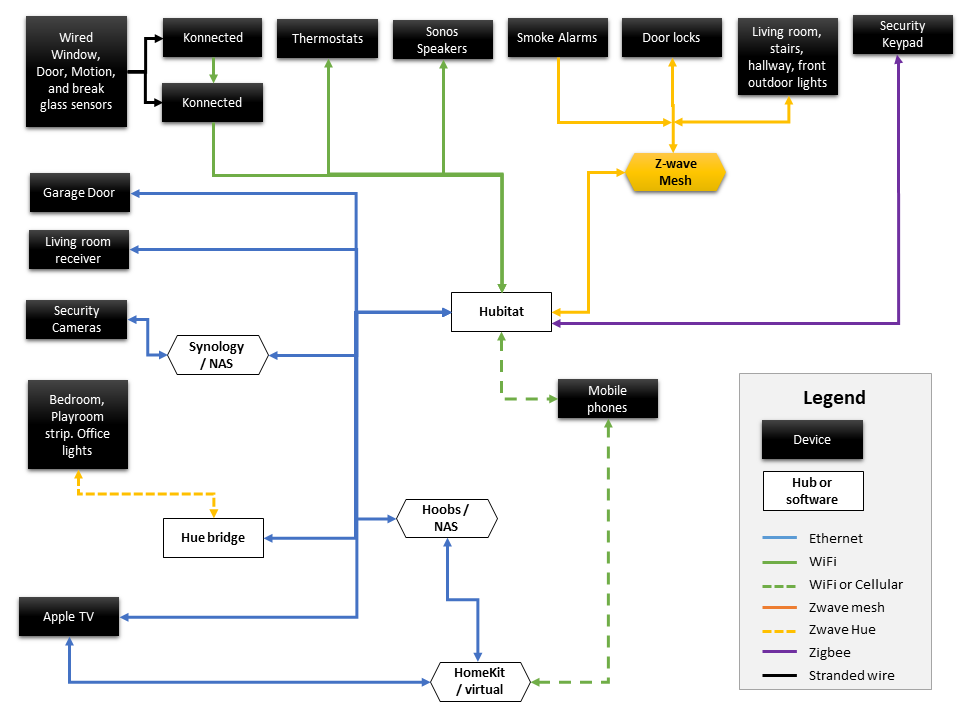The real value of smart homes is smart device integration. Having your devices talk with each other and interacting is where the magic happens. If you are not home and you left the lights on or a door unlocked, having that taken care of for you is awesome. The more your devices can interact and respond to each other the more value you get out of your setup. I have several practical examples of how this can work for you.
I almost titled this, Why should anyone bother spending the time to set up a smart home? It’s a pretty bad clickbait type of title………so I passed. However, it still needs to be addressed. Many people have tried various smart home devices and ultimately just stopped worrying about it. They end up not being used and people correctly have the impression that it isn’t worth it, it is too expensive, and takes too much time. In this case, they aren’t wrong.
The more smart devices you integrate into your smart home hub, the more value it drives.
When you have a central hub that acts as a primary hub as mentioned in this post, you begin to see a different environment. The smart hub brains work across and connect all of your smart devices and at that time the effort is worth it. The best way to describe it is to share what types of scenarios you could implement and you will begin to see what I’m talking about. This clearly isn’t an exhaustive list of options – these are just ideas and recommendations. You can implement whatever you choose.
Here are a few scenarios of what I’m talking about:
- When the first person arrives home in the evening
- The door inside the garage unlocks
- The AC changes to ‘day’ mode and begins heating/cooling
- Some lights turn on where you want them
- Your favorite music turns on
- When the last person leaves
- Alarm enables
- The AC system goes to ‘away’ status and lets the house get cooler/hotter
- Any doors that are unlocked are locked automatically
- All lights are turned off (unless there are some you want left on)
- When your security cameras detect motion, it triggers a few actions. All of this while your cameras are recording what’s happening.
- During the daytime, the outside lights turn on
- At night, a light or two outside might turn off and then back on again
- You could get alerts on your phone or have an inside light blink
- Another example is an evening routine.
- At sundown, your external lights turn on automatically
- Later that evening after everyone is home, the alarm system engages and ensures all windows and doors are closed and locked (and lock them if they aren’t)
- Lights left on in rooms nobody is in are automatically turned off
- A check is made to see if all windows and exterior are closed
- If you are wandering around the kitchen late at night, a light could dimly turn on
Those are just some examples of what you can do. Once the devices are integrated though the smart hub, you can tie any event from one device and take action on multiple devices.
Below I have a diagram of what is configured in my house. The intent is to show an example of what can be done. Your setup could be more or less complex. Again, as the number of devices increases, the potential value also increases. This is why I recommend using a dedicated smart hub – you can integrate whatever devices you want rather than being locked into a specific ecosystem.
You can see that I have connected the legacy security alarm with the new smart hub so that the hub knows when doors, windows, etc are open and closed. I have a nice little ‘beep’ and a notification on my phone when those events are triggered.

It is helpful to know the answer to ‘why bother’ and I hope that this article explains why. Your journey will be different than mine and there are a lot of resources available to assist.
